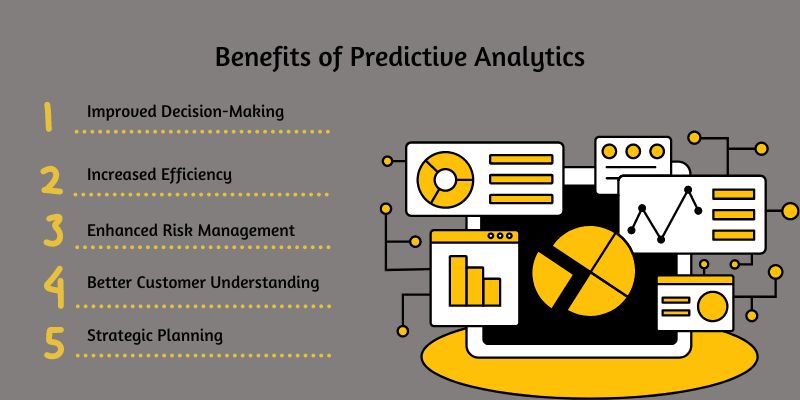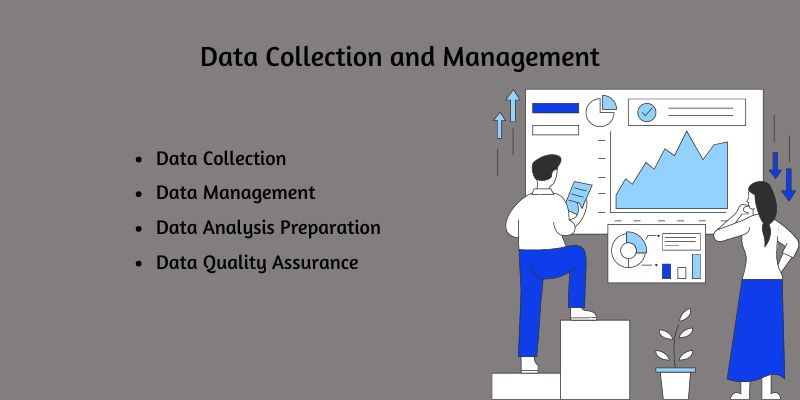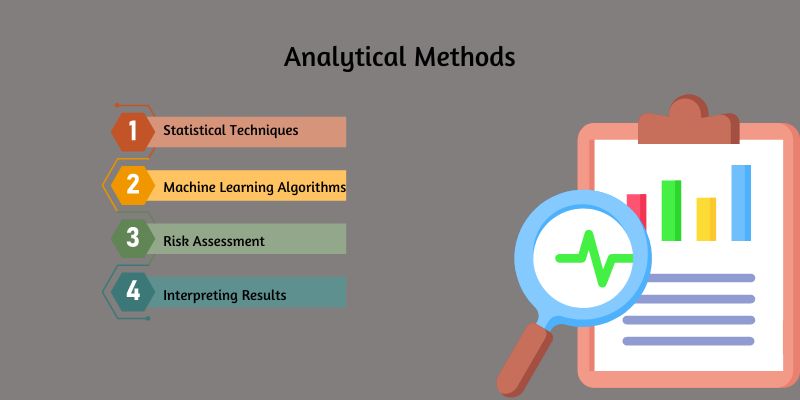In the ever-evolving landscape of workplace safety, staying ahead of potential risks is crucial for employees' well-being and any organization's success. Predictive Safety Analysis emerges as a proactive and forward-thinking approach to identify, assess, and mitigate potential hazards before they escalate.
Predictive Safety Analysis involves leveraging data, technology, and analytical tools to anticipate safety issues, allowing organizations to take preventive measures and create a safer working environment. It's about foreseeing and addressing safety concerns before they become incidents.
The importance of workplace safety cannot be overstated. Beyond legal compliance, fostering a secure work environment is a moral obligation and a key driver of employee well-being and productivity.
Organizations prioritizing safety contribute to a positive workplace culture and build trust among their workforce.
The evolution of predictive safety analysis in the workplace reflects a paradigm shift from reactive to proactive strategies. Traditional safety measures focused on responding to incidents after they occurred.
Predictive Safety Analysis, on the other hand, anticipates potential risks, enabling organizations to implement preventive measures, reduce accidents, and enhance overall safety performance.
As we dive into the complexities of predictive safety analysis in this blog, we will explore its methodologies, tools, and real-world applications.
Understanding how predictive safety analysis aligns with the modern approach to workplace safety is essential for organizations looking to elevate their safety standards and cultivate a thriving, accident-free work environment.
What is Predictive Analytics?

Predictive analytics is a branch of advanced analytics that uses statistical techniques, machine learning algorithms, and historical data to forecast future events and trends.
Predictive analytics helps organizations make informed decisions and anticipate potential outcomes by analyzing patterns and relationships in existing data.
This approach is increasingly used across various industries to optimize processes, improve performance, and manage risks more effectively.
Definition and Purpose
Predictive analytics involves using historical data, statistical algorithms, and machine learning techniques to predict future events.
Unlike descriptive analytics, which focuses on understanding past events, and diagnostic analytics, which explains why something happened, predictive analytics seeks to forecast what is likely to happen.
The primary purpose is to provide actionable insights to guide decision-making, improve operational efficiency, and enhance strategic planning.
How Predictive Analytics Works

The process of predictive analytics typically involves several key steps:
- Data Collection and Preparation: Predictive analytics begins with gathering relevant data from various sources. This data is then cleaned, transformed, and prepared for analysis. Data preparation is crucial as it ensures the accuracy and reliability of the insights generated.
- Model Selection and Development: Predictive models are developed using statistical techniques and machine learning algorithms once the data is prepared. Standard techniques include regression analysis, classification algorithms, and time series analysis. The choice of model depends on the data's nature and the analysis's specific objectives.
- Training and Validation: The selected models are trained on historical data to identify patterns and relationships. During training, the model learns to make predictions based on past observations. The model's performance is then validated using a separate dataset to ensure accuracy and reliability.
- Prediction and Interpretation: The model predicts future events or trends after validation. The results are interpreted to provide actionable insights. These insights can help organizations anticipate potential outcomes, identify opportunities, and mitigate risks.
- Implementation and Monitoring: The predictions and insights are implemented in decision-making processes. Continuous monitoring is essential to assess the model's performance and adjust as needed. This iterative process ensures that predictive analytics remains relevant and effective over time.
Applications of Predictive Analytics
Predictive analytics has a wide range of applications across various industries:
- Finance: Predictive analytics is used in the financial sector for credit scoring, fraud detection, and risk management. Financial institutions can predict creditworthiness, identify fraudulent activities, and assess investment risks by analyzing transaction data and customer behavior.
- Healthcare: Predictive analytics helps predict patient outcomes, manage chronic diseases, and optimize treatment plans. By analyzing patient data, healthcare providers can anticipate potential health issues, improve patient care, and reduce hospital readmissions.
- Retail: Retailers use predictive analytics to forecast sales, optimize inventory levels, and personalize marketing strategies. By analyzing customer purpose, retailers can effectively predict demand, reduce stockouts, and target promotions.
- Manufacturing: Predictive analytics is used in manufacturing for predictive maintenance, quality control, and supply chain optimization. Manufacturers can predict equipment failures, improve product quality, and optimize supply chain operations by analyzing equipment data and production processes.
- Transportation and Logistics: Predictive analytics helps with route optimization, demand forecasting, and fleet management. Logistics companies can optimize routes, forecast demand, and improve fleet utilization by analyzing traffic patterns and shipment data.
Benefits of Predictive Analytics

The benefits of predictive analytics are numerous:
- Improved Decision-Making: Predictive analytics provides data-driven insights that help organizations make informed decisions and anticipate future outcomes.
- Increased Efficiency: Predictive analytics helps organizations improve operational efficiency and reduce costs by forecasting demand and optimizing processes.
- Enhanced Risk Management: Predictive analytics helps identify potential risks and vulnerabilities, enabling organizations to take proactive measures to mitigate them.
- Better Customer Understanding: Predictive analytics analyzes customer behavior and preferences to help organizations more effectively tailor their products and services to meet customer needs.
- Strategic Planning: Predictive analytics supports strategic planning by providing insights into future trends and opportunities, helping organizations develop long-term strategies.
Predictive analytics helps organizations make better decisions, optimize operations, and manage risks more effectively.
Its applications across various industries prove its versatility and importance in data-driven decision-making and strategic planning.
Critical Components of Predictive Safety Analysis
Regarding workplace safety, predictive safety analysis is a proactive approach to identifying and mitigating potential hazards before they manifest. This method involves a comprehensive set of components contributing to a safer work environment.
Data Collection and Analysis

The first key component of predictive safety analysis is the meticulous data collection and analysis. This involves gathering information from various sources within the workplace, such as incident reports, near-miss data, safety inspections, and employee observations.
Advanced technologies contribute to real-time data collection, including sensors, wearable devices, and IoT (Internet of Things). The analysis phase employs data analytics and statistical models to identify patterns, trends, and potential safety risks.
By scrutinizing historical data and recognizing incident precursors, organizations can proactively address safety concerns before they escalate.
Risk Assessment
.jpg)
Predictive safety analysis incorporates a robust risk assessment process to evaluate potential hazards and the likelihood and severity of incidents. This involves leveraging predictive modeling techniques to identify high-risk areas and activities.
The risk assessment considers various factors, including the nature of the workplace, employee behavior, and environmental conditions.
By quantifying risks, organizations can prioritize interventions and allocate resources strategically, focusing on areas with the most significant potential impact on safety.
This predictive approach enables proactive risk mitigation, reducing accidents and enhancing workplace safety.
Predictive Modeling

Predictive modeling is a cornerstone of predictive safety analysis, utilizing algorithms and machine learning to forecast future safety outcomes based on historical data and identified patterns.
These models predict potential incidents, enabling organizations to implement preventive measures.
Predictive modeling considers a range of variables, including workplace conditions, employee behavior, and external factors. By forecasting safety-related events, organizations can implement targeted interventions, optimize resource allocation, and minimize the occurrence of accidents.
The continuous refinement of predictive models ensures adaptability to evolving workplace dynamics, enhancing the efficacy of safety initiatives.
Implementing predictive safety analysis involves:
-
Comprehensive data collection and analysis.
-
Rigorous risk assessment.
-
The application of advanced predictive modeling techniques.
These components empower organizations to proactively identify and mitigate safety risks, fostering a safer and more secure workplace for employees.
Implementation of Predictive Safety Analysis
Implementing predictive safety analysis involves seamlessly integrating it into existing safety protocols. This ensures combining traditional safety practices with data-driven predictive insights, creating a comprehensive safety strategy.
Various approaches are associated with the proper and effective implementation of safety predictive analysis. Some of them are discussed below.
Integration with Existing Safety Protocols
Integrating predictive safety analysis into existing safety protocols is crucial in enhancing workplace safety.
This involves aligning predictive analysis tools and methodologies with established safety procedures to create a seamless and comprehensive safety strategy.
Existing safety protocols may include incident reporting systems, safety training programs, and emergency response procedures.
Predictive safety analysis adds a proactive layer by leveraging data to anticipate potential hazards and risks before they escalate.
Organizations can address emerging safety concerns by integrating predictive insights into these protocols, resulting in a more resilient and adaptive safety framework.
The integration process requires collaboration among safety professionals, data analysts, and relevant stakeholders. It involves mapping out how predictive safety analysis tools complement and enhance the current safety infrastructure.
This alignment ensures that the organization's safety management system effectively utilizes the predictive insights generated.
Employee Training and Involvement
Employee training and involvement are integral components of successfully implementing predictive safety analysis.
Training programs should be designed to familiarize employees with predictive safety and the tools used for analysis.
This includes educating them on how to interpret predictive data, understand potential risks, and actively contribute to the preventive measures suggested by the analysis.
Involving employees in the process fosters a culture of collective responsibility for safety. It encourages them to be vigilant, report observations, and actively participate in implementing safety measures derived from predictive analysis.
Canada Safety Training offers some of the most comprehensive training programs. Here are some of them:
-
Fire Extinguisher Training
-
Hazard Recognition Training
-
Accident and Incident Investigation Training
-
Confined Space Awareness Training
-
Lockout Tagout Training
-
H2S Training Course
-
PPE Training
-
Drug and alcohol awareness training
-
Workplace violence training
Enroll in these training sessions to become familiar with workplace hazards and learn how to prevent and manage them better!
Organizations should conduct regular training sessions and workshops to inform employees about the evolving safety landscape and their role in maintaining a secure work environment.
Communication Strategies
Effective communication is a linchpin in the successful implementation of predictive safety analysis.
Organizations must develop clear and concise communication strategies to convey the insights from predictive analysis to all relevant stakeholders. This includes safety professionals, frontline workers, and management.
Communication strategies should ensure that predictive safety information is accessible and understandable to diverse organizational audiences.
Visualization tools, dashboards, and regular safety briefings can be employed to convey complex predictive insights in an easily digestible format.
Fostering an open communication culture where employees feel comfortable reporting safety concerns based on predictive analysis contributes to a proactive safety environment.
By integrating predictive safety analysis into existing protocols, ensuring comprehensive employee training, and implementing effective communication strategies, organizations can harness the full potential of predictive insights to enhance workplace safety.
These measures create a proactive safety culture that prevents incidents and continuously improves safety practices based on data-driven foresight.
Data Collection and Management

Practical predictive safety analysis starts with comprehensive data collection and management.
The quality and reliability of the analysis depend on the accuracy and completeness of the data used.
Proper data collection and management ensure that the predictive models can provide accurate and actionable insights for improving safety.
Data Collection
Data collection involves gathering relevant information on safety performance, incidents, and operational conditions from various sources. Key data sources include:
- Incident Reports are records of past incidents, including accidents, near misses, and safety violations. These reports provide insights into the types and causes of incidents.
- Safety Audits and Inspections: Regular safety audits and inspections provide data on compliance with safety regulations and identify potential hazards.
- Workplace Sensors and Monitoring Systems: Data from sensors and monitoring systems can include information on environmental conditions (e.g., temperature, humidity), equipment performance, and employee behavior.
- Employee Feedback: Input from employees regarding safety concerns, near-miss incidents, and suggestions for improvement.
Data Management
Data management involves organizing, storing, and maintaining the collected data to ensure its accuracy, accessibility, and usability. Critical aspects of data management include:
- Data Storage: Secure storage solutions, such as databases or cloud services, ensure data is protected and accessible for analysis. Proper backup procedures should be in place to prevent data loss.
- Data Cleaning: Cleaning data involves removing duplicates, correcting errors, and standardizing formats. This step is crucial to ensure the accuracy and consistency of the data used in the analysis.
- Data Integration: Combining data from different sources into a unified format allows for a comprehensive analysis. Integration ensures that all relevant information is considered in the predictive models.
Data Analysis Preparation
Before conducting predictive analysis, the data must be prepared for modeling. This includes:
- Data Transformation involves converting raw data into a format suitable for analysis, such as aggregating data points, normalizing values, and creating relevant variables.
- Feature Selection involves identifying the most important variables or features that influence safety outcomes. This helps focus the analysis on factors with the greatest impact on safety.
Data Quality Assurance
Maintaining high data quality is essential for accurate predictive analysis. Regular audits and validation processes should be implemented to ensure data integrity and reliability.
Ensuring up-to-date data reflects current conditions is also essential for practical analysis.
Analytical Methods

Analytical methods process and interpret the collected data to predict potential safety issues and improve safety measures.
These methods involve applying statistical techniques and machine learning algorithms to identify data patterns, trends, and correlations.
Statistical Techniques
Statistical techniques involve using mathematical models to analyze data and identify trends. Standard statistical methods used in predictive safety analysis include:
- Regression Analysis: Regression analysis examines the relationship between variables to identify factors contributing to safety incidents. For example, it can determine how equipment age or employee training levels influence accident rates.
- Time Series Analysis: Time series analysis involves analyzing data collected over time to identify patterns and trends. This method helps detect seasonal variations or changes in incident rates.
- Correlation Analysis: Correlation analysis assesses the strength and direction of relationships between variables. It helps identify factors that are closely related to safety outcomes.
Machine Learning Algorithms
Machine learning algorithms use historical data to train models that can predict future safety outcomes. Standard algorithms used in predictive safety analysis include:
- Classification Algorithms: Classification algorithms, such as decision trees or support vector machines, categorize data into predefined classes. For example, they can classify incidents as "high risk" or "low risk" based on historical patterns.
- Clustering Algorithms: Clustering algorithms combine similar data points to identify patterns or anomalies. For instance, clustering can reveal common characteristics of incidents or hazardous conditions.
- Predictive Modeling: Predictive modeling involves creating models forecasting future safety events based on historical data. Techniques such as neural networks or ensemble methods can be used to build accurate predictive models.
Risk Assessment
Risk assessment involves evaluating the likelihood and potential impact of safety hazards. Analytical methods used in risk assessment include:
- Failure Modes and Effects Analysis (FMEA): FMEA identifies potential failure modes in processes or equipment and assesses their impact on safety. It helps prioritize risks based on their severity and likelihood.
- Fault Tree Analysis (FTA): FTA examines the causes of safety incidents by visualizing the fault tree. It helps identify root causes and contributing factors.
Interpreting Results
Interpreting predictive analysis results involves translating data insights into actionable recommendations.
This includes identifying trends, patterns, and potential risks and recommending mitigating those risks.
Benefits of Predictive Safety Analysis
The importance of workplace safety cannot be overstated. Beyond being a legal and ethical imperative, it directly influences employee well-being, productivity, and overall organizational success.
There has been a paradigm shift in safety management in recent years, with an increasing focus on predictive safety analysis as a powerful tool to enhance workplace safety.
Here are the benefits of predictive safety analysis:
Prevention of Workplace Accidents
One of the significant benefits of predictive safety analysis is its capacity to prevent workplace accidents.
Organizations can implement targeted preventive measures by analyzing historical data and identifying patterns indicative of potential hazards. This proactive approach allows for anticipating safety risks before they escalate into accidents, reducing the overall incident rate.
Preventing accidents not only safeguards the well-being of employees but also contributes to a positive safety culture within the workplace.
Reduction in Occupational Hazards
Predictive safety analysis is crucial in reducing occupational hazards by identifying and addressing potential risks before they threaten employees.
Organizations can pinpoint high-risk areas and activities through sophisticated risk assessments and predictive modeling, allowing for targeted interventions.
Reducing occupational hazards enhances the overall safety environment, providing employees with a workplace that prioritizes their well-being. As a result, organizations can create a safer and healthier work environment, increasing employee satisfaction and productivity.
Cost Savings for Organizations
Implementing predictive safety analysis can yield substantial cost savings for organizations. By preventing accidents and minimizing occupational hazards, companies can avoid workplace incidents' direct and indirect costs.
Direct costs, such as medical expenses and compensation for injured workers, are reduced, while indirect costs, including downtime, production delays, and potential legal ramifications, are mitigated.
The financial benefits extend beyond immediate cost savings, as organizations with a strong safety record often experience improved operational efficiency and enhanced reputation, contributing to long-term financial success.
The benefits of predictive safety analysis encompass the prevention of workplace accidents, the reduction of occupational hazards, and significant cost savings for organizations.
Organizations can create a safer work environment, protect their employees, and achieve positive financial outcomes by adopting proactive safety measures.
Challenges and Considerations
As organizations embrace predictive safety analysis to enhance workplace safety, it's essential to acknowledge and address the challenges and considerations associated with this proactive approach.
Ethical Implications
Predictive safety analysis introduces many ethical considerations that organizations must carefully navigate. The ethical implications stem from using employee data to predict potential safety risks.
While the intention is to enhance workplace safety, it raises concerns about privacy, consent, and the responsible use of personal information.
It is crucial to ensure transparency in how predictive models operate and the purposes for which they are employed.
Organizations should communicate clearly with employees about the data collected, how it will be utilized, and the measures to protect their privacy.
Establishing ethical guidelines and obtaining informed consent from employees contribute to building trust and addressing ethical concerns associated with predictive safety analysis.
Data Privacy and Security
Implementing predictive safety analysis involves the extensive collection and analysis of data, making data privacy and security paramount.
Organizations must institute robust measures to safeguard sensitive information from unauthorized access, breaches, or misuse. This includes employing encryption protocols, secure storage systems, and stringent access controls.
Compliance with data protection regulations, such as GDPR in Europe or similar legislation in other regions, is imperative. Organizations should regularly audit their data security practices, implement encryption technologies, and educate employees on maintaining data confidentiality.
By prioritizing data privacy and security, organizations can instill confidence among employees and stakeholders in the responsible use of predictive safety analysis.
Over-Reliance on Predictive Models
While predictive models offer valuable insights, overreliance on them can pose challenges. Workplace safety is dynamic, influenced by various factors, and can change rapidly. Organizations must avoid relying solely on predictive models without considering real-time situational factors.
Balancing predictive insights with ongoing monitoring and adjustment based on current conditions is essential. This requires a flexible and adaptive safety approach incorporating predictive analysis and the ability to respond effectively to emerging situations.
Striking the right balance ensures that organizations benefit from the predictive power of data while maintaining agility in addressing evolving safety challenges.
Navigating these challenges demands a comprehensive strategy that includes ethical guidelines, robust data security measures, and a nuanced approach to the role of predictive models in safety management.
As organizations implement predictive safety analysis, addressing these ethical considerations and challenges is integral to fostering a safe, responsible, and trusted workplace environment.
FAQs
How does Predictive Safety Analysis differ from traditional safety methods?
Predictive Safety Analysis differs from traditional safety methods by using data-driven insights and statistical models to anticipate and prevent safety issues before they occur.
Traditional methods often focus on reactive measures based on past incidents.
What types of data are used in Predictive Safety Analysis?
In Predictive Safety Analysis, data types include historical incident records, near-miss reports, environmental conditions, equipment performance metrics, and worker behavior patterns.
What industries can benefit the most from Predictive Safety Analysis?
Industries such as manufacturing, construction, oil and gas, and transportation can most benefit from Predictive Safety Analysis due to their high-risk environments and complex operations.
Final Words
Integrating predictive safety analysis in the workplace can improve workplace safety.
As organizations evolve to embrace cutting-edge technologies and data-driven approaches, predictive safety analysis emerges as a powerful tool for anticipating and mitigating potential hazards.
This innovative methodology goes beyond traditional safety practices, offering a proactive stance that can significantly enhance overall safety outcomes.
Organizations gain unprecedented insights into potential safety risks by leveraging data collection, risk assessment, and predictive modeling.
This enables them to take preventive measures, reduce occupational hazards, and ultimately create a safer working environment for employees, with an added emphasis on the integration of online safety certifications. These certifications ensure that individuals possess not only the practical knowledge but also formalized recognition of their commitment to safety standards.
However, with innovation comes responsibility. Ethical considerations surrounding data privacy, transparency, and the potential overreliance on predictive models demand careful attention.
Predictive safety analysis promises to revolutionize how we perceive and manage workplace safety as we look toward the future.
Organizations that embrace this forward-thinking approach position themselves not only in safety management but also asandes for a workplace culture that prioritizes the well-being of its most valuable asset – its people.
Predictive safety analysis is not just a technological advancement; it's a paradigm shift in how we approach workplace safety. By navigating the ethical considerations and challenges thoughtfully, organizations can pave the way for a safer, more resilient, and future-ready work environment.